In my culinary experience, a little dry mustard goes an awfully long way. It’s like the old joke about Tabasco sauce: “My wife and I have been married so long, we’re on our second bottle.”
I’m at a loss, then, to explain my friend Pete Fleischman’s seemingly inexhaustible stash of Colman’s Mustard tins. You know the ones: About the size of a deck of cards or a pack of unfiltered cigarettes, they’re the mustard-yellow canisters with ketchup-red lettering that you see in the spice aisle of any reasonably well-stocked grocery store. We have a tin in our own pantry—if you’re a serious cook it’s really the only dry mustard that will do—but, again, it’s not something we replace very often. Once a year, at the very most.
So how, or where, Pete keeps coming up with them is a little mysterious. Not that I’m complaining, mind you, because whenever I get a package in the mail from Pete with a Colman’s Mustard tin inside, I know that when I pop off the lid and shake the contents into my open palm, trout flies will spill out.
More specifically, trout flies that will work on the streams Pete and I fish together: the enigmatic Sand County streams of central Wisconsin for browns and the boisterous, tea-colored freestoners in the state’s northeastern quadrant for brookies. As one of those tragic souls who doesn’t tie himself, receiving a gift of flies from Pete makes me feel happily rich.
It’s also the case that Pete’s a phenomenally skilled tyer who invents full-dress Atlantic salmon patterns just for fun (see The Ph.D.), so over and above their fish-catching value his trout flies are simply lovely to behold. They’re exquisite miniatures—elegant, perfectly proportioned, and without so much as a barbule out of place. “Good enough,” you learn, is a concept with which Pete Fleischman is utterly unfamiliar.
All of which ought to give you some idea of how excited I was, earlier this winter, to get one of those yellow tins in the mail. The flies that tumbled out were sparsely tied soft hackles, #18s I guessed, and they were gorgeous, with a mottled black-and-brown wing over a creamy-gray body. The possibilities of running them as droppers in various two-fly combinations were so deliciously attractive that they pushed all other thoughts from my mind, so it took me a minute to put two-and-two together and realize that those mottled feathers hadn’t come from a package.
More Like This
They’d come from the limit of woodcock I’d shot on my last hunt of the season, birds that my English cocker spaniel, Rumor, had flushed for me on a pretty piece of cover that abuts one of those Sand County trout streams. It’s only about a 20-minute drive from Pete’s place (which is on yet another Sand County stream), so I swung by on my way home, thinking he might want some feathers.
He did.
For any number of reasons, I’d been looking forward to the late-season woodcock shooting even more fervidly than usual. I’d discovered several new covers that I was excited to try when the leaves were down; while you don’t get the crazy numbers of flushes then that you do when the big flights are coming through, the flushes you do get give you better looks—and more-makeable opportunities. It’s like fishing a light hatch as opposed to a heavy one: fewer rises to cast to, but a better chance, all else equal, that a given cast will elicit an “eat.” These tend to be the instances, luminous in memory, when I feel like I almost know what I’m doing.
Another reason I was pumped about hunting then is that I’d found a Hank Shaw recipe I dearly wanted to try: whole roast woodcock with Cumberland sauce. For that I needed birds that were plucked, not skinned, a caveat that eliminated all of the woodcock in my freezer from consideration and gave our efforts afield—Rumor’s and mine, I mean—a piquant soupçon of additional focus.
Well, you know what they say about the best-laid plans. I drove up to my hunting country, in the public forests of far northeastern Wisconsin, to find several inches of snow on the ground with more coming down. (For the record, it was October 23rd.) The white stuff continued to fall overnight—and if you know anything at all about woodcock, you know that they don’t do snow. They need bare, unfrozen ground to source the worms and other invertebrates that comprise the whole of their diet; their response to persistent snow cover, no matter what it says on the calendar, is to get the hell out of Dodge and migrate to balmier climes.
My response was to curse the weather gods and kill what was left of the cabin’s bourbon—or at least what was left of the really good stuff.
Obviously I didn’t want to end the season on that crummy note; plus, I still needed birds for my recipe. There had to be a few woodcock hanging around south of the snow line, so one bright, glassy-cold morning I loaded up Rumor and headed for that spot along the trout stream. An old farm field slowly filling in with alder, birch, and popple, it had plenty of the spongy, low-lying ground and bristling, light-devouring cover woodcock gravitate to. I’d been intrigued by its prospects for years; it had just never been in the cards for me to hunt it before.
After following my little black-and-tan dog through the thick stuff for half-an-hour and not putting up a bird, though, I was beginning to wonder if we weren’t a day late and a dollar short, as the saying goes. But then, walking a mucky trail cut between two patches of alders, a woodcock fluttered up to my left. I had no shot, but as I turned to whistle for Rumor, who was beating the bushes to my right, another woodcock all but undressed me. Somehow, I recovered in time to scratch it down. Rumor was Johnny-on-the-spot with the retrieve, and the skunk was off.
Moments later another woodcock twittered up. The gun went bang, the bird went limp. Rumor had to hunt around for a while—she hadn’t gotten any kind of mark—but she found it eventually. When woodcock are the quarry, she always does.
Circling back to where the first woodcock had flushed, I sent Rumor towards the area where I suspected it might have landed. She vanished into the alders, a commotion ensued, and a second later the bird came zipping over my head. I put a sloppy swing on it—I missed, in other words—but saw about where it went down. On the re-flush, my aim was true.
Limit in hand, I heeled Rumor back to the truck and texted Pete to see if he was around. He cherry-picked the feathers that interested him; back home, I finished the job. The plucked woodcock aged in the refrigerator for a couple of days before, roasted and sauced according to Shaw’s recipe, they served as the pièce de résistance of my wife’s 65th birthday dinner. They were, by unanimous acclamation, sensational.
Then, a few weeks later, those exquisite flies showed up—flies that will in all likelihood be baptized in the waters of the stream on whose banks their feathers
were harvested. Can the circle be closed more honorably than that?





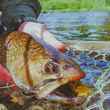

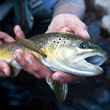



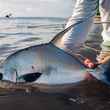














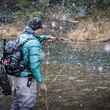



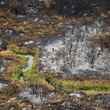
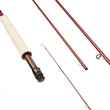
Comments
Tom Williams replied on Permalink
Good read!
Mike O’Mara replied on Permalink
Wonderful. Tom Davis never disappoints. Having caught fish from flies I’ve tied with feathers from birds I’ve shot, yes, a special satisfaction.
Pages